An ancient cold snap causes heated debate
The claim that a comet was responsible just won’t die
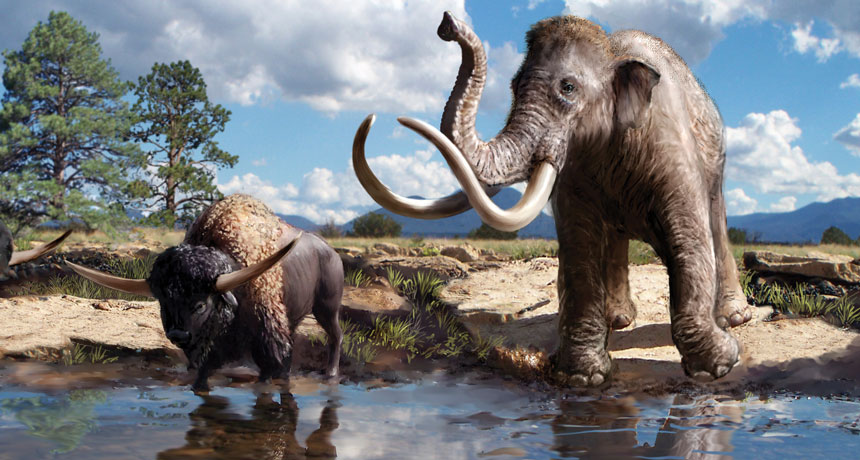
About 13,000 years ago, bison, mammoths (seen here in an illustration) and other large mammals roamed North America. Researchers continue to argue over what led to their extinction.
VICTOR O. LESHYK
Around 13,000 years ago, a chilly Earth was thawing. It was the end of the last great ice age. Vast frozen sheets had covered much of North America, Europe and Asia for thousands of years. Now they were retreating. Giant mammals like woolly mammoths and saber-toothed cats roamed the tundra and grasslands. An ancient people called the Clovis roamed North America, hunting mammoth with distinctive spears.
Then, about 12,800 years ago, something strange happened. Earth abruptly plunged back into a deep chill. Temperatures in parts of the Northern Hemisphere fell to as much as 8 degrees Celsius (almost 14.5 degrees Fahrenheit) colder than today. Then, just as abruptly, Earth once again began to warm.
The cold snap lasted only about 1,200 years. That’s a mere blip in the history of our planet. But afterward, many of the giant mammals were dying out. And signs of the Clovis people were now gone.
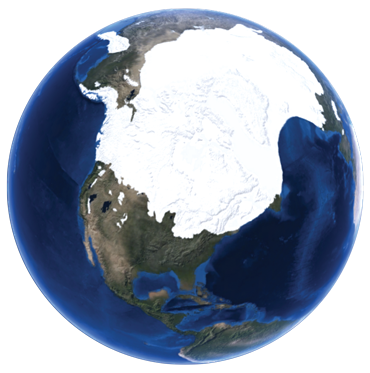
Geologists call this cold snap the Younger Dryas. Its cause is a mystery. Most researchers think a large pulse of freshwater from melting ice flooded into the ocean. This might have interfered briefly with ocean currents that carry heat around the world. However, geologists have not yet found firm evidence of how and where this happened. For example, they haven’t found traces of the path that this ancient flood took to the sea.
But for more than a decade, one group of researchers has made waves by suggesting a more controversial story. They blame a space rock for the sudden deep freeze. About 12,800 years ago, these researchers say, a comet — or pieces of a comet — hit or exploded over the Laurentide Ice Sheet. This ice sheet once covered much of North America.
Pieces of the comet most likely exploded in Earth’s atmosphere, the researchers say. This kind of aboveground explosion is called an airburst. And this triggered wildfires across North America. Those fires gave off enough soot and other compounds to block out the sun and cool the planet.
Most scientists think a similar explosion happened in 1908 over Siberia. That event produced as much energy as 1,000 Hiroshima atomic bombs. The researchers behind the impact hypothesis think the Younger Dryas started with an even larger explosion. That would neatly solve several prehistoric puzzles, they note. For instance, it could explain the extinction of large animals as well as the disappearance of the Clovis people.
Many scientists question the space rock theory
For more than a decade, researchers have argued in scientific journals about this hypothesis. Experts from a wide range of scientific fields think the impact hypothesis is wrong. They say there’s little to no solid evidence for many of its key points.
“Over and over and over, there are these things that are claimed to be [indirect evidence of] an impact,” says Vance Holliday. He’s an archaeologist and geologist at the University of Arizona in Tucson. But these bits of so-called evidence are “all debatable,” he says — “every single one.”
Allen West disagrees. He’s long been a lead supporter of the impact hypothesis. West is a retired geophysicist who owned GeoScience Consulting in Dewey, Ariz. He admits that many types of scientists have attacked the hypothesis. “We have different battles with different disciplines,” he says.
He compares these battles to the fights in the 1980s over whether an asteroid struck Earth 66 million years ago, killing off all dinosaurs except the birds.
“There were just vicious, nasty attacks for nearly a decade on that,” West says. “People said it just couldn’t have happened.” But then the crater turned up. Today, the asteroid-based extinction is widely accepted. Hard-to-refute evidence, like that telltale crater, he says, is “probably what it would take with us, too.”
Indeed, no craters have been found from the Younger Dryas. And the landscape of North America — the likely site of such an impact — has been pretty thoroughly checked out. Without a crater or other direct evidence of an impact, West and his colleagues have turned to indirect evidence. They’ve published a steady stream of findings that they say are signs of an impact some 12,800 years ago.
The latest came out in March. West and more than two dozen other researchers published a pair of papers in the Journal of Geology. These papers included data from ice cores and sediment cores — tube-shaped samples drilled from land or under the sea. The cores held signatures of giant wildfires that may have happened during widespread burning about 12,800 years ago, West notes.
Some opponents of the impact hypothesis, however, just feel fed up by the new papers. For 10 years, “they keep building on their past record, ignoring the critiques,” Holliday says. “It just drives me crazy.”
Birth of a hypothesis
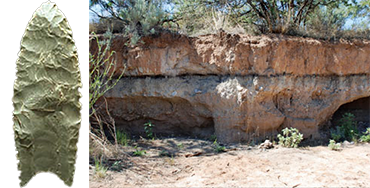
The world first heard about the Younger Dryas impact hypothesis in 2007.
Four researchers, including West, sat in front of reporters at the American Geophysical Union’s spring meeting. It was held in Acapulco, Mexico. The researchers had taken a close look at about two dozen sites across North America. Underground, the sites all showed a “boundary layer” — a stripe in the sediment dating to the start of the Younger Dryas. Half a dozen of the sites also had thin layers called “black mats” right above the boundary layer. Several of those half-dozen sites also showed signs that the Clovis people lived there.
The black layers were made of soft soil with a lot of nutrients. They apparently marked when the Clovis people stopped living at these sites. For example, a black mat at Murray Springs, in Arizona, sits above a trove of Clovis artifacts. These include a fire pit and the almost complete skeleton of a mammoth. But no such artifacts exist above the mat.
In fact, the stone spear tips made by the Clovis culture abruptly disappear from soils above that time period at Murray Springs. The same is true at other sites. This has made researchers think the Clovis people suddenly and mysteriously vanished.
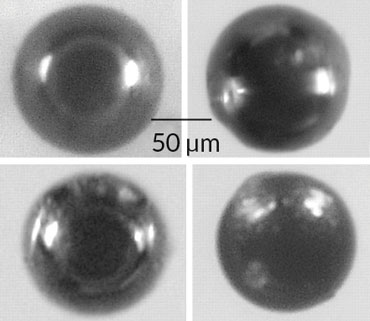
Back in 2007, West and his colleagues noted that those Younger Dryas boundary layers held many intriguing items. These included tiny round magnetized grains called microspherules (My-kroh-sfeer-yools). Other magnetized sediment grains showed up there, too. There were even tiny carbon balls (hollow round carbon molecules called fullerenes) and super-tiny diamonds. Unusually high levels of the elements iridium (Ih-RID-ee-um) and nickel also marked these layers, as did signs of burning: charcoal and soot.
None of these clues, on its own, could prove there had been an impact from space. Microspherules, for instance, form when a material heats up and then rapidly cools. A strike from a space rock could create them. So could a volcanic eruption or industrial pollution.
But taken together, the authors charge, these clues add up to only one thing: Something hit Earth or exploded high in its atmosphere about 12,800 years ago. The soot and charcoal hint that the impact triggered widespread fires. And smoke from those fires could have blocked out the sun, causing some 1,000 years of frigid temperatures throughout the Northern Hemisphere.
Because no impact crater from this time has turned up, the researchers say the space rock was probably already in pieces when it entered Earth’s atmosphere. Smaller fragments would have done plenty of damage as they exploded over the shrinking Laurentide Ice Sheet. But they wouldn’t have left much of a smoking hole in the ground.
When West and his colleagues first shared their theory, the news made a splash. Other scientists were intrigued. The idea that clues to an ancient impact were buried across the continent was definitely worth probing further. Mark Boslough says that at first he accepted the data. Boslough is a physicist at the University of New Mexico in Albuquerque. “I thought, ‘they’re onto something interesting,’” he recalls.
Frustrations mount
Then Boslough and other scientists began to analyze the data on their own. And they turned up questions.
Some researchers claimed that they couldn’t find strong evidence of impact clues such as those microspherules and nanodiamonds. Others questioned how precisely the researchers knew the ages of many Younger Dryas boundary layers. If the ages weren’t exact, it would call into question the idea that one event affected all of the sites at the same time.
Boslough says he also had a problem with the physics of the impact hypothesis. The researchers had suggested different scenarios. These range from a single object striking the ice sheet to multiple pieces exploding high in the air. But none of the scenarios made sense, Boslough wrote in 2012. Either the pieces of a broken-up comet would have been too small to do much, or they would have been too large not to leave craters.
Holliday raises another issue. He says that the apparent disappearance of the Clovis culture isn’t really a big mystery that needs to be solved. Hunter-gatherers like the Clovis people didn’t stay at one site for long. So it’s no surprise, he says, that they would have left their artifacts behind and moved on.
Immediately after the Clovis period, he adds, a different style of spear points appeared. These artifacts are called Folsom points. Ancient peoples probably just changed their spear technology as they shifted from hunting mammoths and mastodons to bison, Holliday says.
Those large Ice Age animals such as mammoths, he adds, didn’t suddenly disappear either. Their numbers were already dropping. “All these animals running around and then, boom, at 12,800 years ago they just go away? That’s just not the case,” Holliday says. “These extinctions were global and happened at different times around the world.”
Burning questions
The latest papers from the supporters of the impact hypothesis focus mainly on wildfires. These fires were part of the original hypothesis.
Ammonium (Ah-MOH-nee-um) is an electrically charged molecule derived from ammonia. Ice cores from Greenland show that there was more ammonium in the ice at the start of the Younger Dryas. The researchers say this suggests large-scale burning of biomass — plants and other living things. Adrian Melott and his colleagues first shared these data in 2010. Melott is an astrophysicist at the University of Kansas in Lawrence.
The researchers said that the best explanation for ammonium ions in those ice cores was an impact from space. Scientists have found a similar spike in those same ice cores that dates to 1908 — the year of the airburst over Siberia. The new papers also describe finding charcoal peaks that date to the start of the cold snap.
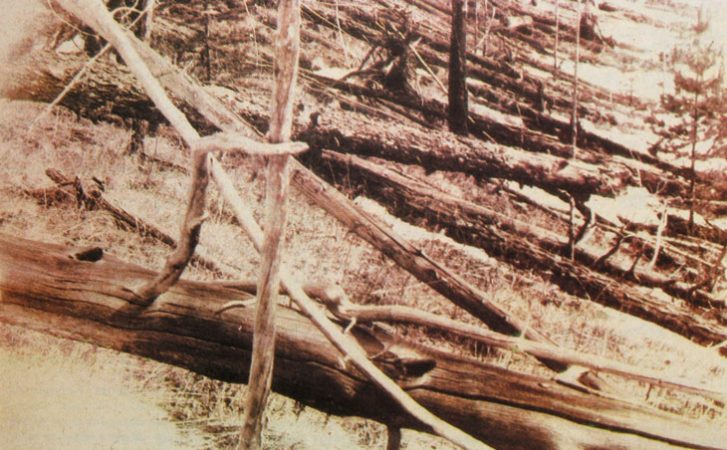
The papers combine all of these possible signs of an impact and try to compare when they happened, says Melott. He’s also one of the authors on the new impact papers. Those markers include evidence of microspherules, iridium and platinum dust that researchers have previously described. All of these markers could have been caused by the same event, he says.
Jennifer Marlon has taken her own look at sediments in North America that were deposited between 15,000 and 10,000 years ago. Marlon studies ancient ecology and climate at Yale University in New Haven, Conn. She’s also an expert on biomass burning. She sees no evidence that the beginning of the Younger Dryas, specifically, was a time of continent-wide fires.
“I’ve studied charcoal records for many years now,” Marlon says. In 2009, she and colleagues reported data on sediments from the bottoms of North American lakes. They studied charcoal and pollen in those sediments. Importantly, her study covered not only the years of the Younger Dryas cold snap, but also a few thousand years before and after.
Her team turned up signs of multiple small wildfires. But none were near the beginning of the Younger Dryas. “Forests burn in North America all the time,” she says. “You can’t find a cubic centimeter of sediment in any lake on this continent that doesn’t have charcoal in it.”
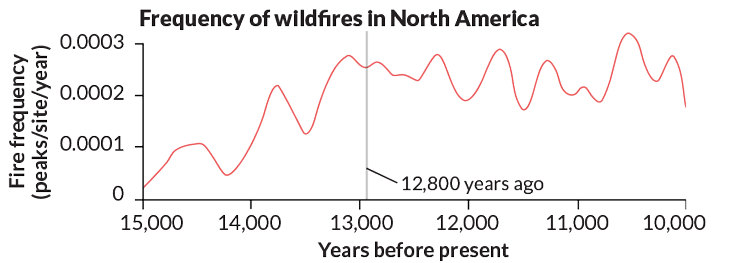
Such fires could have been triggered by rapid climate change. As ecosystems quickly shift, more dead fuel might become available. “That can cause major vegetation changes and fires,” Marlon says. “We don’t need to [blame] a comet.”
The problem with the data in the recent papers, Marlon says, is that the researchers look only at a narrow time period. That makes it hard to know how large or unusual the signals really were. From her data, there may have been more burning toward the end of the Younger Dryas, when the planet began to again warm abruptly.
That’s her biggest problem with the part of the new papers about biomass burning. “I don’t understand why they’re zooming in [on that],” she says. “It’s what makes me skeptical.”
Holliday has the same concern. “Most of the time they sample only around this time interval,” he says. He thinks it would be better to zoom out and look for more fires in sediment cores that span 15,000 to 20,000 years. “If this is a unique event, then we shouldn’t see anything like it in the last 15,000 years.”
West says that isn’t necessary, and that the team was just focusing on one big fire from around 12,800 years ago. The new papers also suggest that Marlon and her colleagues didn’t correctly interpret the ages of their samples, he says.
Marlon disagrees. She says that she analyzed and compared her sites in several different ways. Still, she found no unusual peak at 12,800 years. In fact, she says, many of the sites show no signs of burning at that time.
A complicated story
West says he and the other supporters of the impact hypothesis haven’t ignored their critics. “We have directly rebutted those criticisms multiple times,” he says. He and others are working on another new paper that will describe in detail their arguments to counter their critics’ charges.
Those critics say too many questions remain unanswered. Holliday says he and others are preparing a response to the Journal of Geology papers. It will outline many points on which they disagree. These include the proper dating of rock layers and soils. They also include data that seem to contradict how and why animals went extinct and human artifacts disappeared.
“We all love a good debate,” Marlon says, “but I know there’s a lot of frustration in the community” that this hypothesis is still around. Indeed, the data presented in the new papers have done nothing to change her mind about the comet strike. “It didn’t happen,” she says.
Yet Marlon understands why the other scientists are sticking to their comet story.
“I have had pet theories, too,” she says. “We are pattern-seekers. We tend to see things that look like a signal and so many times they’re not. A comet is simpler and more visually compelling — more appealing, in a way — than trying to sort out what Earthbound trigger might have caused such an abrupt climate change.
“I wish the evidence were stronger for [an impact],” she says. “It’s not as much fun when it turns out to be a more complicated, nuanced story.”







